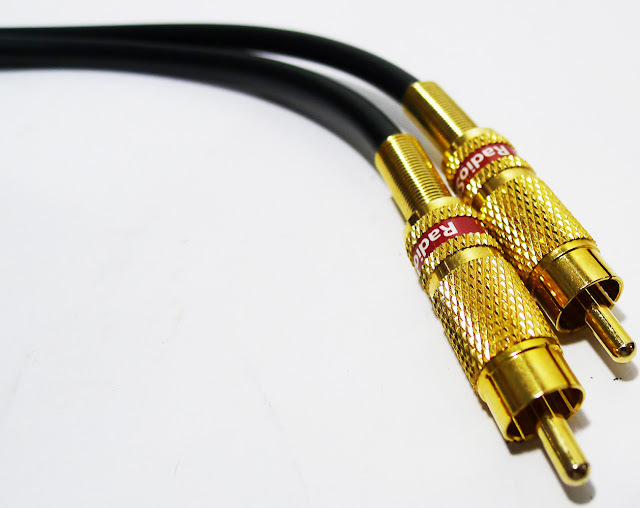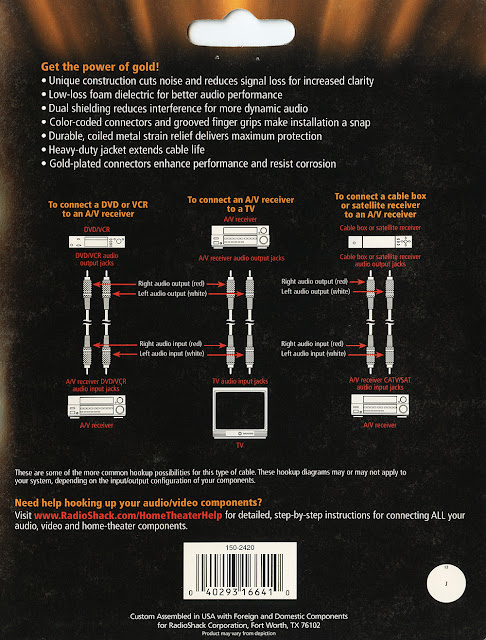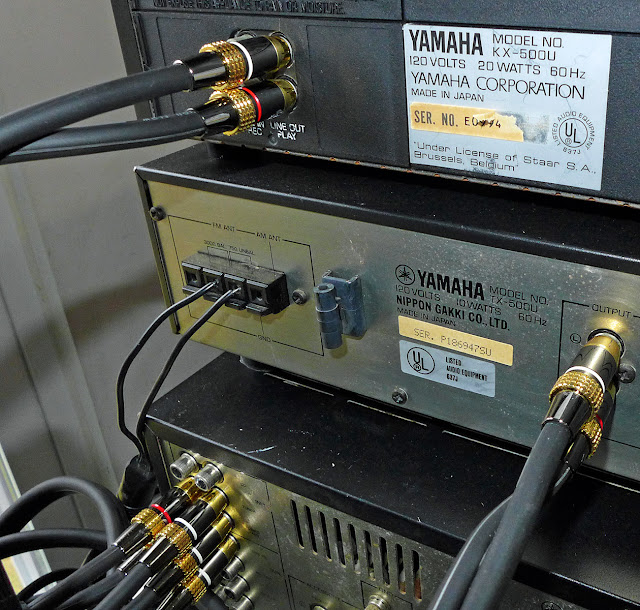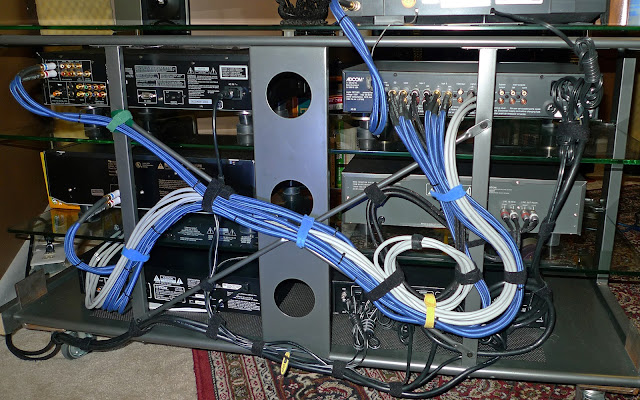January 28, 2021
#416
Gentle reader,
I have been writing about audio equipment for many years now and have owned hundreds of components and speaker pairs since I started in this hobby at 19 in 1976.
My latest article can be read here:
The Robb Collections: Retail Prices Specifications and More On Classic And Modern Dynaco Stereo Equipment
And for the complete list of links to ALL of the articles:
Radio Shack is barely struggling these days with very few stores, what with the world of Internet shopping. But there was a time that most towns boasted at least one store and cities held many branches.
Long ago, electronics such as radios and televisions used vacuum tubes instead of transistors and as a result, since they failed after a time and were easily and safely replaced by the consumer, many drug stores had a Tube Tester machine. But, those same stores did not usually sell tubes.
Radio Shack, Allied Electronics and other chains of electronic stores were THE place to go to find all of your electronic needs such as tubes, antennas, wiring, and all kinds of other things.
The company has gone through a number of bankruptcies over recent years and are only a pale shadow of what they once were.
But, for decades one could buy turntables, amplifiers, tuners, receivers, speakers, ham and CB radios, wires, cords and cables of all sorts and all kinds of other things many of which had the Realistic brand.
There was a time, a LONG time, where people went to Radio shack and bought a simple roll of thin "lamp cord" and used that to wire their speakers. Thin grey Phono or RCA cables to use in their HiFi, Stereo or Quadraphonic music setups. And they thought nothing of it. Music was coming out, what more could you want?
Then magazines like Stereophile, Audio, HiFi then later, Stereo Review and The Absolute Sound came out and people started to learn that to enjoy the BEST music experience, they needed Audiophile components, speakers and of course wiring and cabling.
Not wanting to lose money to other stores, Radio Shack jumped on the bandwagon and began making better quality wires, cables and cords. Often with 24K gold plating.
I have owned every length which Radio Shack sold of these cables.
I went through recent years of the catalogs trying to find these cables. For the longest time, Radio Shack's "Gold Series" were like this:
That happens to be a "Y" cable which I no longer have. Anyway, searching through recent years of the catalogs on that site, which is AWESOME, I finally found in the 2003-2004 catalog these cables and this is what it said:
“Premium A/V Cables-the perfect blend of design and technology.
Without a doubt, these are some of the highest quality cables available.
They are GUARANTEED to deliver absolute best signal that you’re A/V
components can produce. Premium construction from the inside and out.
Stereo Audio Cable
Innovative dual twisted-pair design isolates each channel’s positive and negative components to reduce hum and crosstalk, even on long cable runs. 100% shielding from cable to contacts helps keep the signal in and interference out. 99.997% pure oxygen-free copper core delivers a cleaner signal path. Two 24K gold-plated low-capacitance phono (RCA) plugs at each end. Ferrite toroidal filters remove EMI and RF interference.
3-foot #15-1001 6-foot #15-1002 12-foot #15-1003 20-foot #15-1004 ”
So, now I had other item numbers for them and still could find nothing else and that catalog had no prices in it. Below is the back of the card in the package.
I have a stack of vintage Yamaha components inches from where I sit at my PC typing these articles. They are the "500U" series, I have the AX-500U integrated amplifier, TX-500U tuner, the FINEST tuner I have ever owned, the KX-500U cassette deck and had tried two CX-500U CD players, but they both had issues, so I bought the next one up, the CX-510U. And an OPPO DV-980H universal player for SACD, HDCD and DVD-Audio discs. I do not have a turntable in here because I have no place to put one.
Anyway, the left channel kept cutting out on the CD player, I could wiggle the RCA cable and it might come back on, or smack the side of the amp and it might.
To troubleshoot, I swapped the RCA cables and the problem disappeared. I got out my meter and found the left channel plug was open.
Since I have used these cables before, but always they were used, I sought out some on eBay and as often happens to me, there was a seller, he happened to be brand new to eBay, he had three sets of brand new ones complete with years of dust on the packaging. No extra charge for the dust, at only $15.00 each.
My Yamaha CD player had an occasional flaw in that it would play the music as if one was pressing the fast-forward button, which I was not. Most of the time it played fine.
But I realized that it was superfluous since I had the OPPO which of course plays regular CDs. So, I sold the Yamaha on eBay.
Due to it's front-to-back depth, I had it on the bottom. Since it would bother me having it's ass sticking way out of the stack. Normally, I would never stack components on disc player, but for some reason the OPPO would migrate backwards being on the top of the stack. Even "QuakeHold Museum Putty" would not keep it in place.
The OPPO is built like a tank and it does not seem stressed being at the bottom and works fine.
Of all of the integrated amplifiers I have owned, this is the first I have seen with dedicated terminals for an equalizer or other sound modifying components. Normally "U" shaped pins joined the preamp to the power amp portions.
My very first component, a Dynaco PAT-5 preamp kit had the same thing, but it was switched so no jumpers were needed:
"E.P.L. OUT and E.P.L. IN" are the same type of circuitry terminals. I do NOT miss those tight RCA terminals which preclude the use of quality RCA interconnect cables.
My current Dynaco PAT-6 Tuner-Preamplfier, which I photographed before cleaning it, has modern widely spaced RCA terminals.
Since these cables have been curled in their packaging since new, they are a little stiff. I usually like to carefully align cables and use Velcro wrap to organize them. But I am letting the acclimate to their new environment. And I may just ignore my OCD tendencies and leave them be.
Three examples of my madness are below. All from 2015, they show the various brands of cables I have used on the main system in the listening room, which does NOT look like these images do. In fact, I'm surprised I have not make photographs of what the cabling looks like now.
This is the system as it is now. If you compare the photos below, you may note the differences.
Those gray Monster Cable speaker cables are long gone. I now use their "Z" series and am much pleased with the sound. The interconnects are a mix of Liberty Cable and top-of-the-line Monster Cable 1000 series.
This one is more Liberty Cable and less Monster Cable.
And these are all Liberty Cable with some grey Monster Cable ones, I think. The photos are in reverse chronological order because Blogger has been doing that since their "upgrade".
Above are these Radio Shack cables compared to typical ones many people use. And this image shows the last Radio Shack Gold series compared to their predecessor and at bottom are a pair the latest cables I found before our local Radio Shack became a Sprint cell phone store. They are their Auvio brand. The plugs are similar, but do not have the firm gripping outer terminals and the cables are much thinner and probably not "twisted pair" construction.
The same cables were available in analog HD video as well as a combination of stereo audio and S-Video which is currently available (as of this writing) on eBay.
Now, how do they sound? In a word, superb! The soundstage has broadened and deepened, even cassette tapes sound better. Plus, sometimes, new IS better.
Thank you for taking the time to read my humble blog. Please take a moment to click or tap the FOLLOW button which is located on the edge of the Dynaco PAT-5 back panel photograph. That way, you will receive notifications of new articles as they come out. Also, feel free to leave a comment below or on Facebook.
Scott
January 28, 2021
#416
















































































